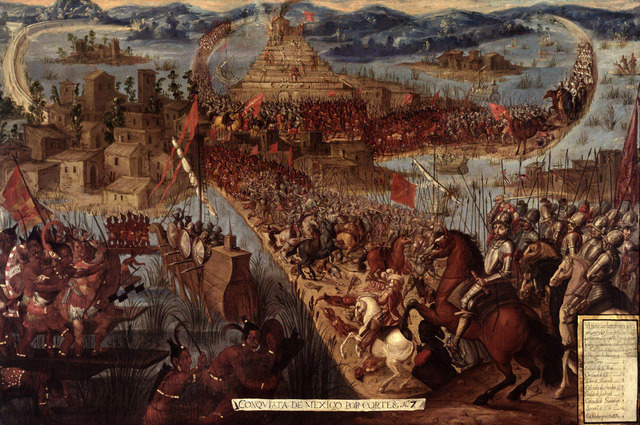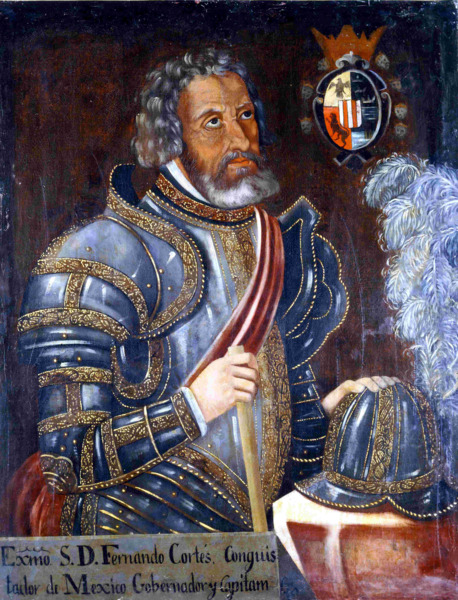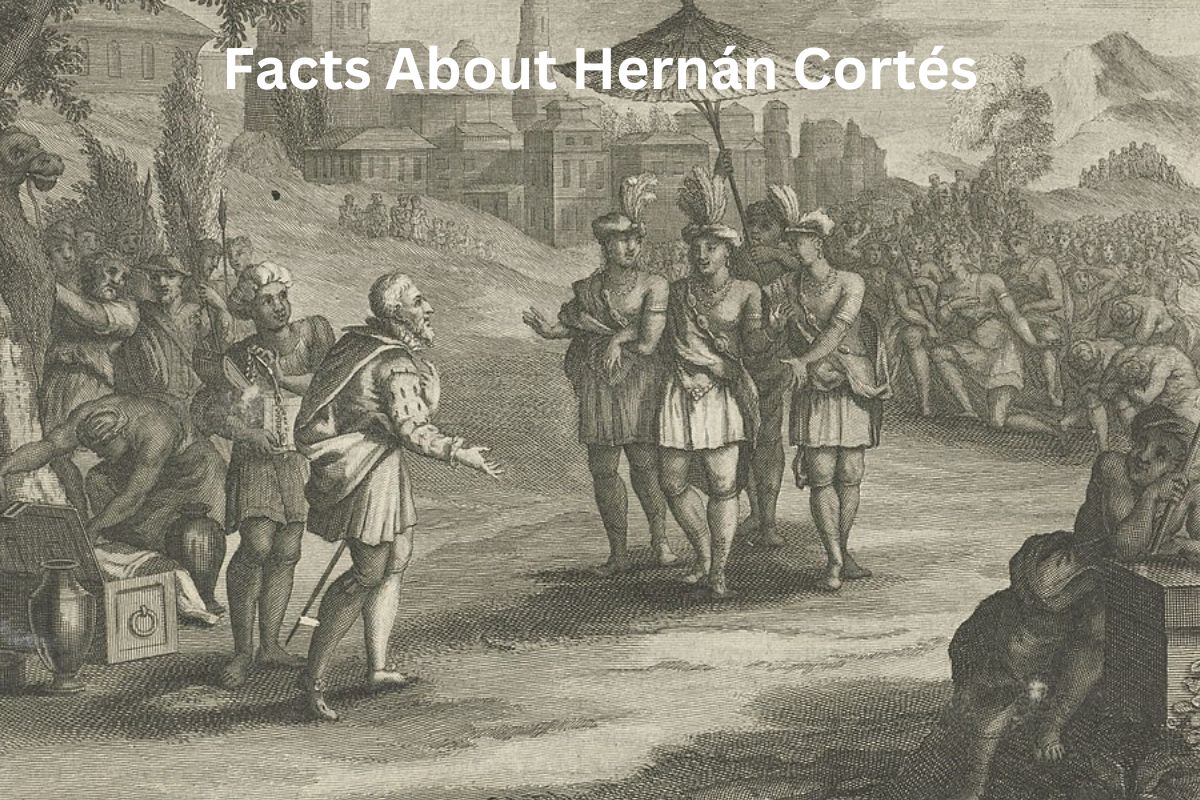Hernán Cortés was a Spanish conquistador who commanded the expedition that conquered Mexico and brought the Aztec Empire to an end.
He is a contentious historical character, revered by some as a hero and reviled by others as a brutal invader who brought down a great empire.
Hernán Cortés is well known as the Spanish conquistador who led the expedition that brought the Aztec Empire to its knees and captured Mexico for Spain. He is well remembered for conquering the Aztec city of Tenochtitlan and defeating its emperor, Montezuma II.
Cortés arrived in Tenochtitlan, the Aztec capital, with the support of local allies, and was originally acclaimed as a deity. However, tensions between Cortés and the Aztecs increased, and he was compelled to abandon the city in 1520 during the Noche Triste (“Sad Night”).

He later returned to Tenochtitlan, where he besieged the city for several months before finally taking it in 1521 with the help of his friends. Cortés was designated governor and captain-general of New Spain after the conquest, which comprised Mexico and parts of Central America.
The conquest of Mexico by Cortés had a tremendous impact on Mexican history as well as the world at large.
Hernán Cortés Facts
1. He was not the first born son of his family
Born in 1485 in Medellín, Spain, he came from a lesser noble family but was not the firstborn son, which meant he had to find his own path in life.
Also Read: Hernán Cortés Accomplishments
When he was 19 years old, he left Spain and traveled to the Caribbean, where he worked as a soldier and later as an administrator on the island of Hispaniola.
2. Cortés amassed riches and power in Cuba
Hernán Cortés left Spain in 1504 and went to the island of Hispaniola, where he served as a soldier and governor for several years.
He eventually relocated to Cuba, where he was granted an encomienda, a system of land concessions that granted him the ability to collect tribute from the indigenous population in exchange for protection.

Cortés amassed riches and power in Cuba through his encomienda, and he utilized this position as a springboard for his voyage to Mexico in 1519.
3. He established the city of Veracruz
In the year 1519, Cortés was given the responsibility of leading a fresh voyage to Mexico with the intention of exploring the area and establishing new colonies there.
Also Read: Hernan Cortes Timeline
He led a group of six hundred soldiers ashore on the coast of Mexico, where they established the city of Veracruz.
From there, he launched his march deeper into Aztec territory, intent on bringing the Aztec Empire and Montezuma II, its king, under his control.
4. Upon his arrival, he was first greeted as a deity by the Aztecs
Cortés arrived in Tenochtitlan, the capital of the Aztec empire, with the assistance of local allies. Upon his arrival, he was first greeted as a deity by the Aztecs.
Cortés was eventually compelled to abandon the city in 1520 during what became known as the “Nite of Sorrow,” which occurred as a result of the growing tensions between him and the Aztecs (“Sad Night”).
Once some time had passed, Cortés made his way back to Tenochtitlan. There, with the assistance of his allies, he laid siege to the city for a number of months prior to finally capturing it in 1521.
5. The Cholula Massacre
The Cholula Massacre was a key incident during Hernán Cortés’ invasion of the Aztec Empire in Mexico. Cortés and his army arrived in Cholula, a significant center of the Aztec civilization, in October 1519.
Cortés opted to strike first because the Aztec ruler, Moctezuma II, warned him that the people of Cholula were plotting an attack on his men.
Cortés directed his forces to invade the city, and they slaughtered thousands of unarmed inhabitants. The massacre lasted several days, according to some sources, and the army looted and burnt the city.
The tragedy became known as the Cholula Massacre, and it is considered one of the most heinous actions of the Spanish conquest of Mexico.
6. Cortés and his army arrived in the Aztec capital of Tenochtitlan in November 1519
When Hernán Cortés and his army arrived in the Aztec capital of Tenochtitlan in November 1519, they were greeted by Montezuma II, the Aztec emperor. Cortés’ meeting with Montezuma II was a watershed occasion in the Spanish conquest of the Aztec Empire.
According to some versions, Montezuma II initially thought Cortés was a god or supernatural creature, and he greeted the Spanish conquistadors with great pomp and circumstance. Montezuma II was famed for his wealth and power, and he lavishly gifted gold and beautiful stones to Cortés.
Nonetheless, tensions between Cortés and Montezuma II quickly arose. Cortés was adamant on conquering the Aztec Empire and converting the indigenous peoples to Christianity, however Montezuma II refused to submit to European rule.
Cortés grew increasingly hostile to Montezuma II over time, and in 1520, he had the Aztec ruler imprisoned.
7. Cortes a second cousin once removed of Francisco Pizarro
The Inca Empire of Peru was conquered by Francisco Pizarro, a second cousin once removed of Hernán Cortés.
Both men became famous for their conquests of important indigenous civilizations in the Americas, and both were born in Spain during the same age of exploration and colonization.
Cortés and Pizarro were related by blood, but they did not get along and there is no proof that they coordinated or worked together.
In spite of this, their victories were pivotal moments in American history, cementing their place in legend as two of the most influential personalities of the Spanish colonial era.
8. He married a woman by the name of Catalina Juarez
While Hernán Cortés was residing in Cuba, he wed Pedro Arias Dávila’s sister-in-law. Pedro Arias Dávila was the governor at the time. She went by the name Catalina Juarez, and the couple was blessed with a child they named Martin.
Cortés was able to launch his voyage to Mexico and secure an encomienda with the help of his influence after securing it through his marriage to Catalina, which served to further consolidate his status in Cuba.
9. He had a child with a interpreter
Cortés had a child with his interpreter, Dona Marina, also known as La Malinche, during his conquest of Mexico.
She was an indigenous woman who spoke multiple languages and was instrumental in assisting the Spanish conquistadors in communicating with the indigenous peoples they encountered.
Cortés and Dona Marina had a son, Martin Cortés, who became one of New Spain’s wealthiest men.
10. Cortés fell out of favor with King Charles V of Spain
Despite his accomplishments in Mexico, Hernán Cortés fell out of favor with King Charles V of Spain in his later years.
Cortés had gained tremendous wealth and power in Mexico, and he was known for being ambitious and self-sufficient. As a result, he posed a potential threat to the Spanish monarchy, and he was accused of several acts of corruption and misbehavior.
Cortés was forced to return to Spain in 1540 to address these charges. Although he was able to defend himself and keep his job at first, he finally fell out of favor with Charles V and was removed as governor of New Spain.
He lived the rest of his life in relative obscurity, with little influence or power.
